Our little herb garden just outside of the back door had too much sun and not enough water this summer.
This morning some of the children and I did some weeding and mulching to start putting the space back into shape.
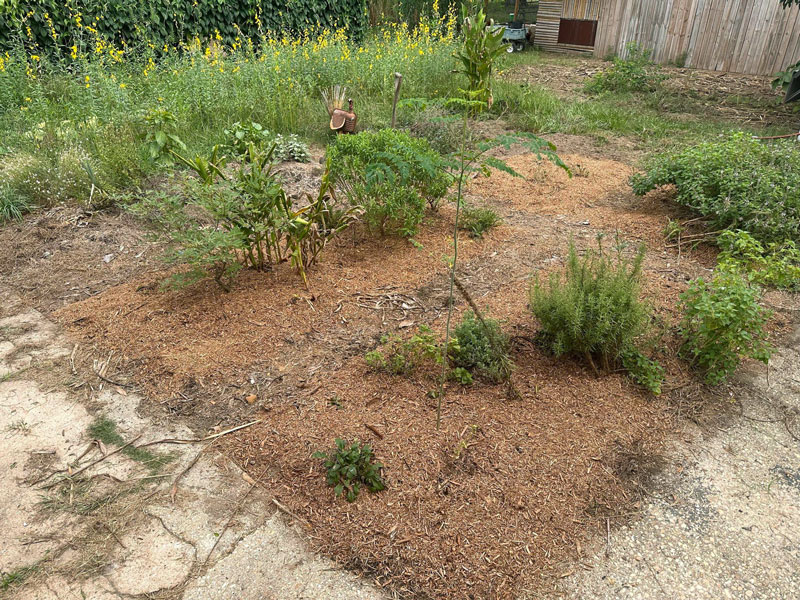
That mulched area was full of plants back in spring and early summer, but there were multiple casualties. The heat killed the lemon balm, the mint, the chives, the lamb’s ear, the strawberries and probably a half-dozen other plants.
Here’s that space back on June 6th of this year:
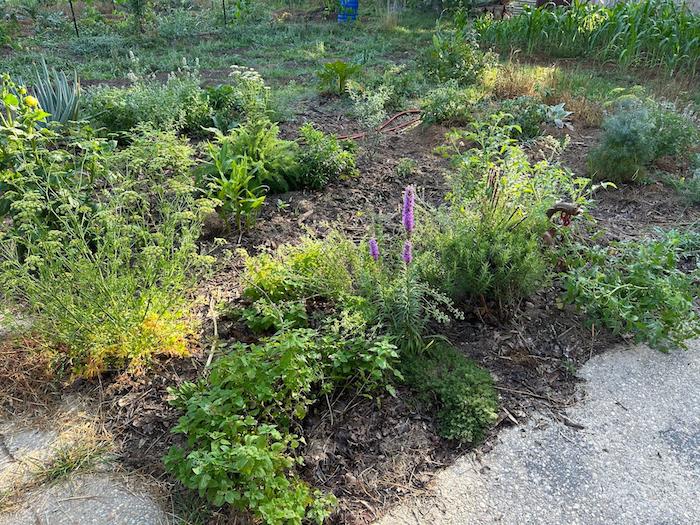
Here’s another angle, taken this morning:
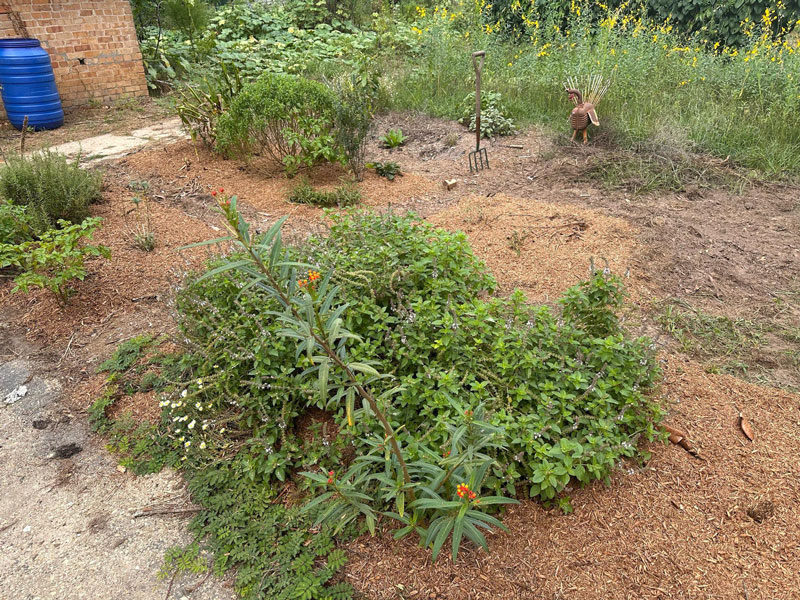
And here’s that area back in June:
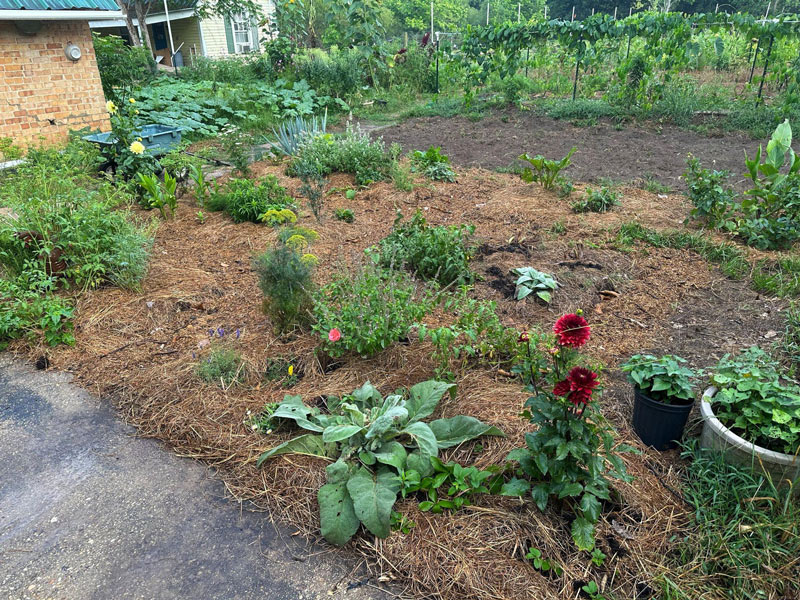
The African blue basil has become a big bush now, though the dahlia, dill, lavender and mullein bit the dust.
We know what can take the heat now!
Here you can see the African blue basil with Mimosa pudica and a daisy I transplanted from a parking area near our church in Pensacola:
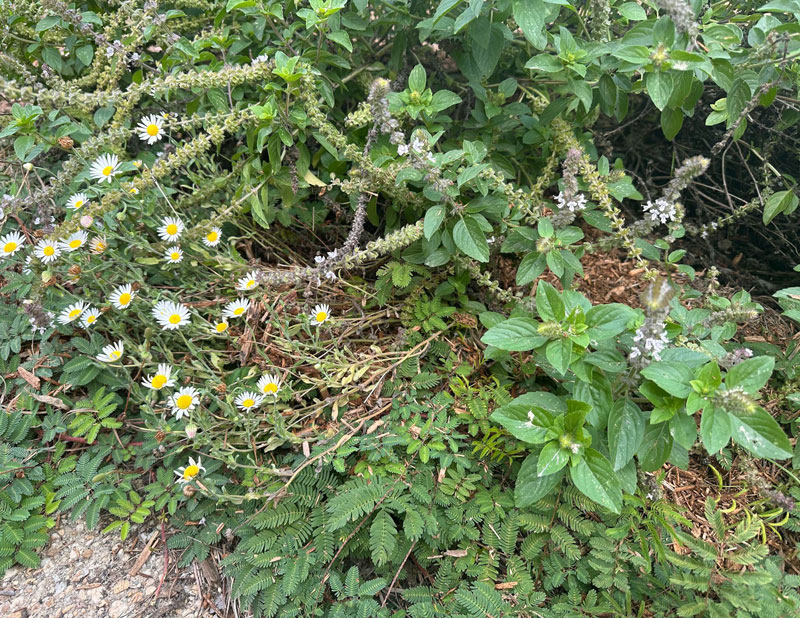
The little lion’s ear (Leonotis leonurus) we planted in spring is now nice and big:
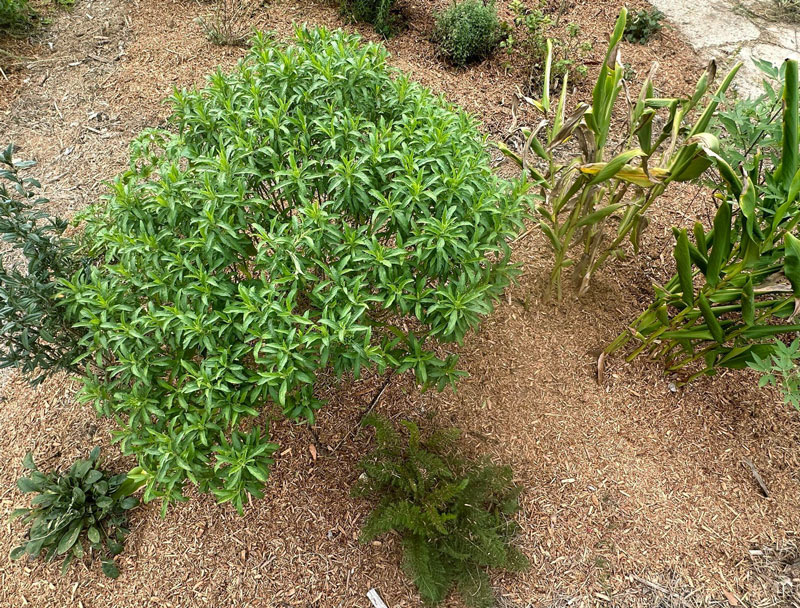
It’s about to bloom:
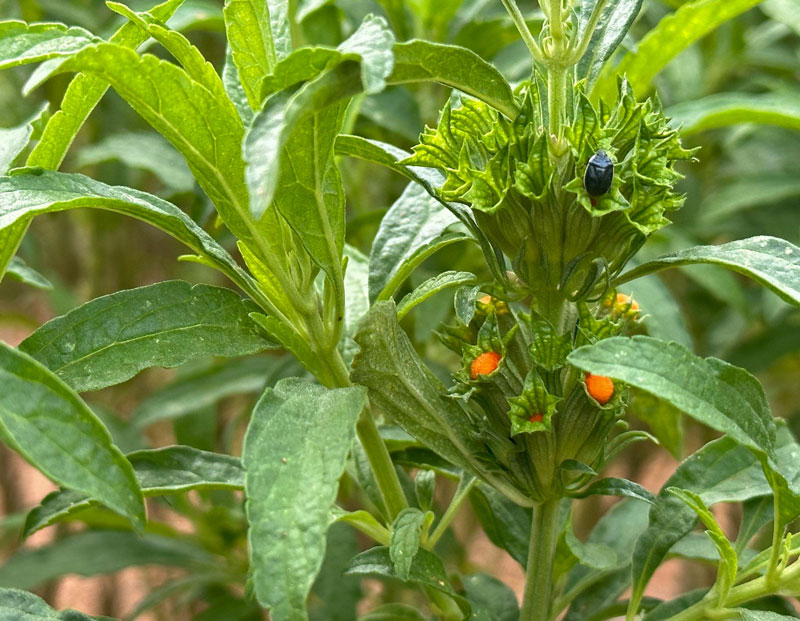
Here’s a view over the herb garden into the area where we planted sunn hemp a couple of months ago:
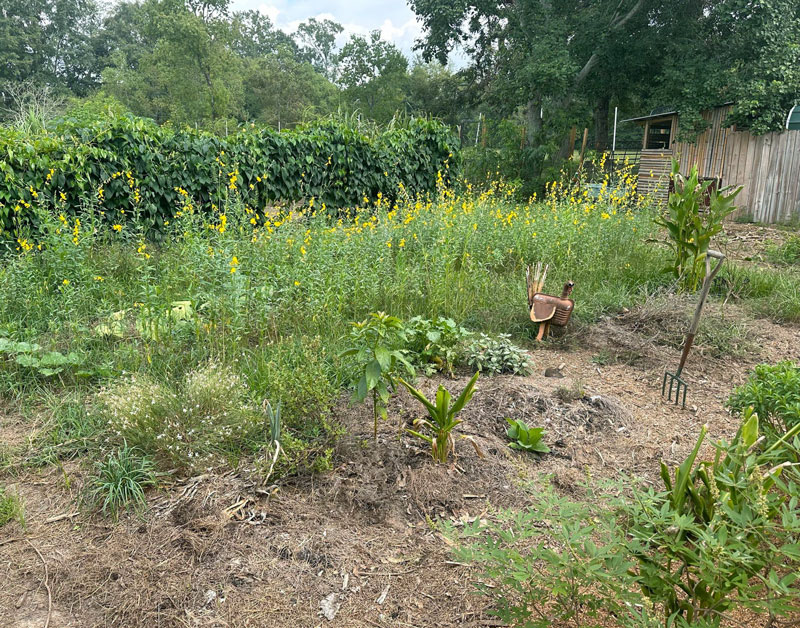
That is a terrible cover crop, considering how incredible sunn hemp normally grows. It should be taller than a man, and very thick and green – yet the heat and drought were incredible. Still, we’ll get some nitrogen and biomass from it. It’s amazing it grew at all.
Two weeks ago my friend James helped me move our bathtub worm bin into the garden area where we’ll get more use from the “worm tea.”
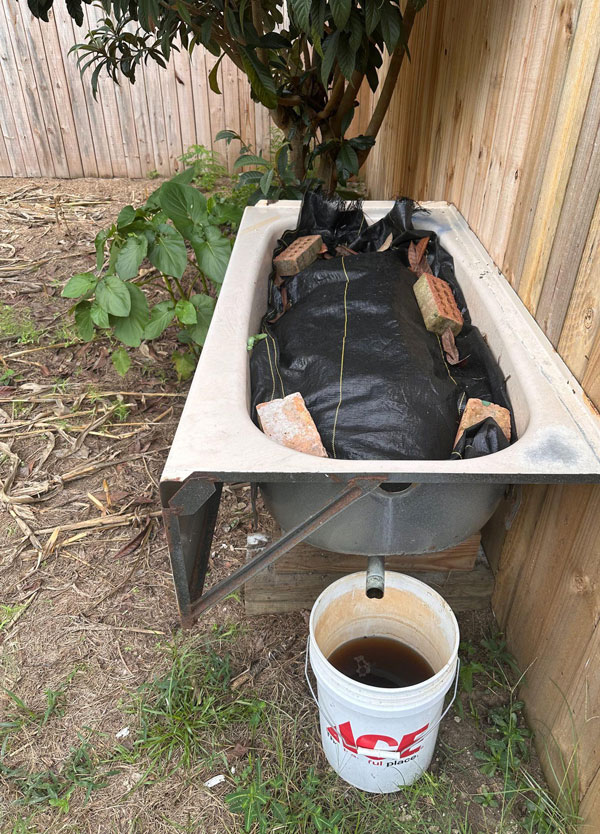
Before moving it, I harvested 25 gallons of worm castings! 20 of them went into the 3′ x 30′ bed we made for our fall daikon plot, and the last 5 gallons we gave to James’ wife Holly for her gardening projects.
Now that the bucket is right by the garden, we can easily mix some with water to use as a tonic for sad plants.
Also, here’s another look at the Mimosa pudica. 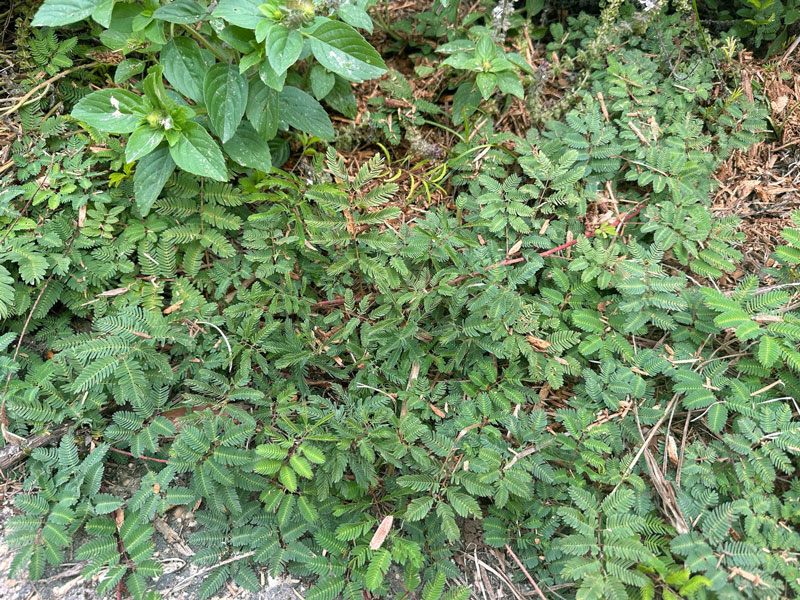
I really don’t know why we’re growing this stuff except that it’s amazing to watch it shrink away when you touch it.
It’s cousin Mimosa invisa was a terrible weed down in Grenada. It looked the same as M. pudica but had horrible thorns which made it very difficult to weed. This plant is not nearly that thorny. I’ve thought about planting it around the base of a fruit tree as a nitrogen-fixing ground cover, though I’m not sure if it will live through winter.
I had a vision of our herb garden being a beautiful mass of green by the end of the year but the sun was just relentless.
I think we’re going to have to add some shade for this next year. Perhaps we’ll put in some trellises and/or some small fruit trees.

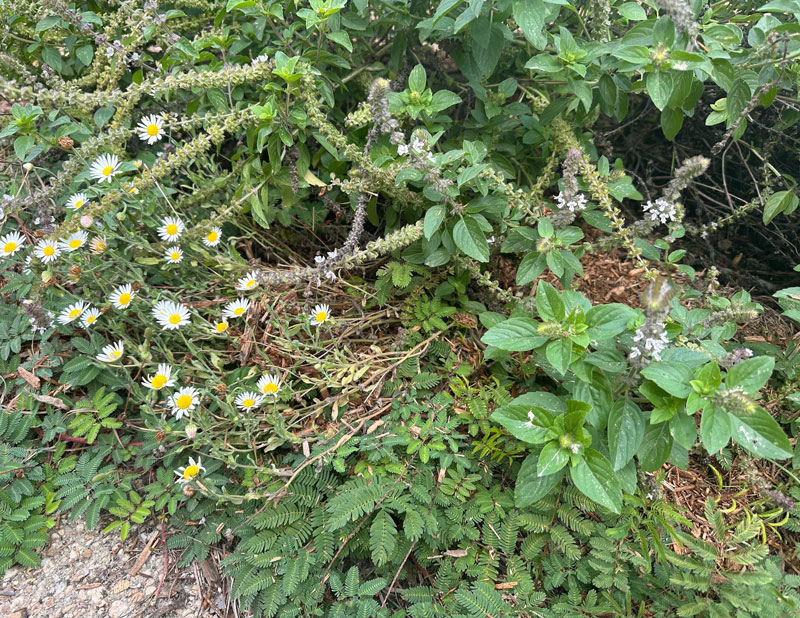
8 comments
This site talks about the medicinal value of Mimosa pudica.
https://drjockers.com/mimosa-pudica-parasites/
Sorry! I don’t know how to make a clickable link. At any rate, it looks like good stuff.
I’ve grown Sunshine Mimosa (Mimosa strigillosa) as a groundcover for about 6 years. It is thornless.
Im in zone 8a Texas with heavy black clay and I’ve been really impressed with how well it has handled these conditions. Through drought, heat, and record-breaking cold winters. It always comes back strong and healthy, unprotected.
The lemon blam, mint, and chives died?
I thought they were indestructibles.
But weeks of 100+F like you had this summer, and not enough water will do it, I guess.
We have chives and mint in the orchard. I mow it.
A little of one of the lemon balm plants survived, but yes. Dead as doornails.
I’ve had chives (also garlic chives) go dormant in long hot and dry spells before. So I suggest checking out the roots before deciding they are really dead. Some or all of your chives might come back out when temperatures moderate. Or maybe not – August was *really* brutal this year.
Your plan to add a little shade in your herb garden for some of the less heat-tolerant herbs should really help. My garlic chives planted around the edge of my fig tree stayed healthy this summer even though I didn’t water them during the long heat wave in August.
Maybe they will – I’ll look for them.
I am tempted to put some small trees in there – just need to figure out which species.
In that 4th photo, do I spy tropical milkweed?
As you encourage us to plant things outside the zone, we are also challenging the sun requirements we are told plants need. We are discovering that in our situation, most plants welcome some shade during the day.
Yes – that is indeed tropical milkweed.
Comments are closed.